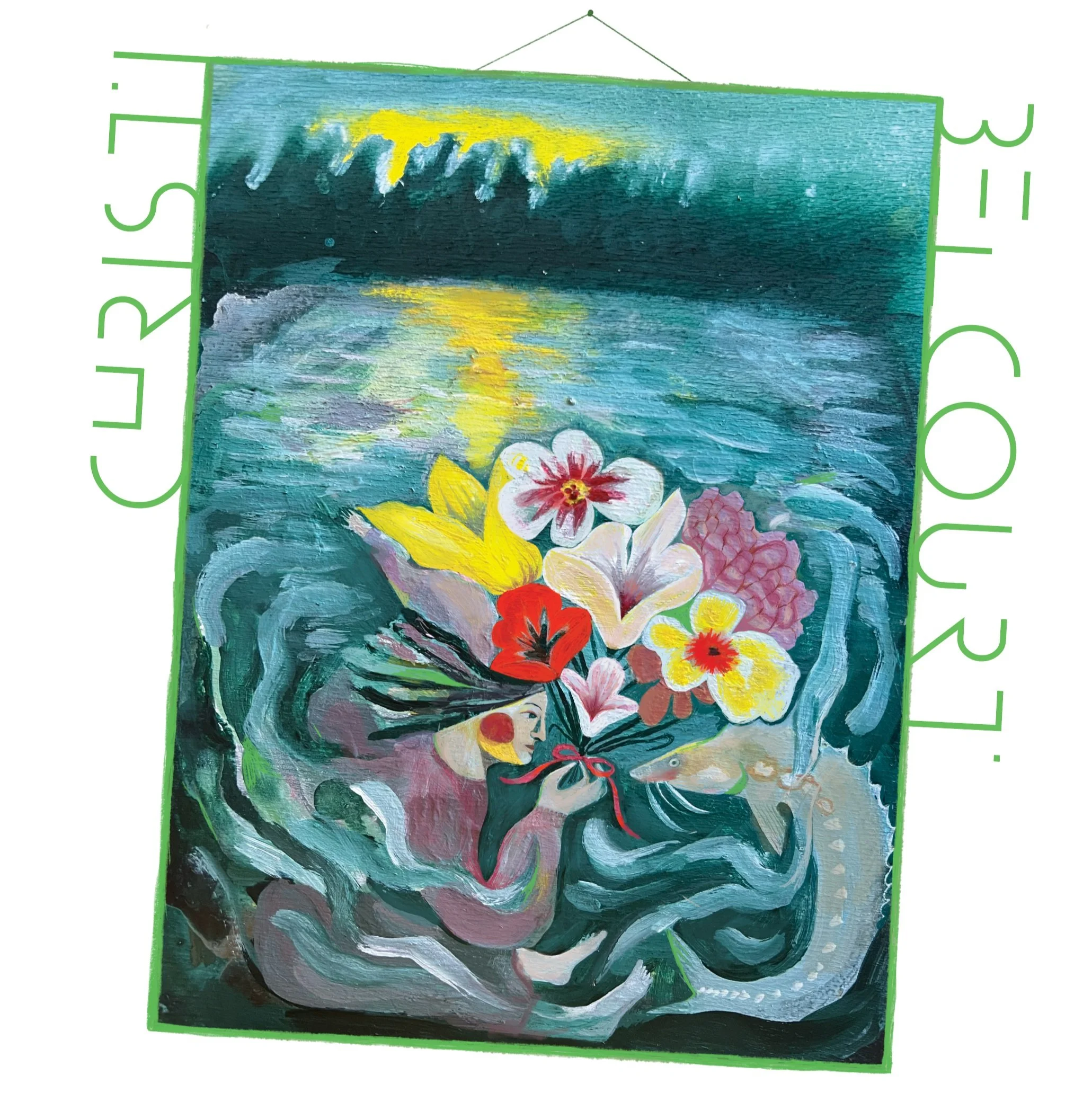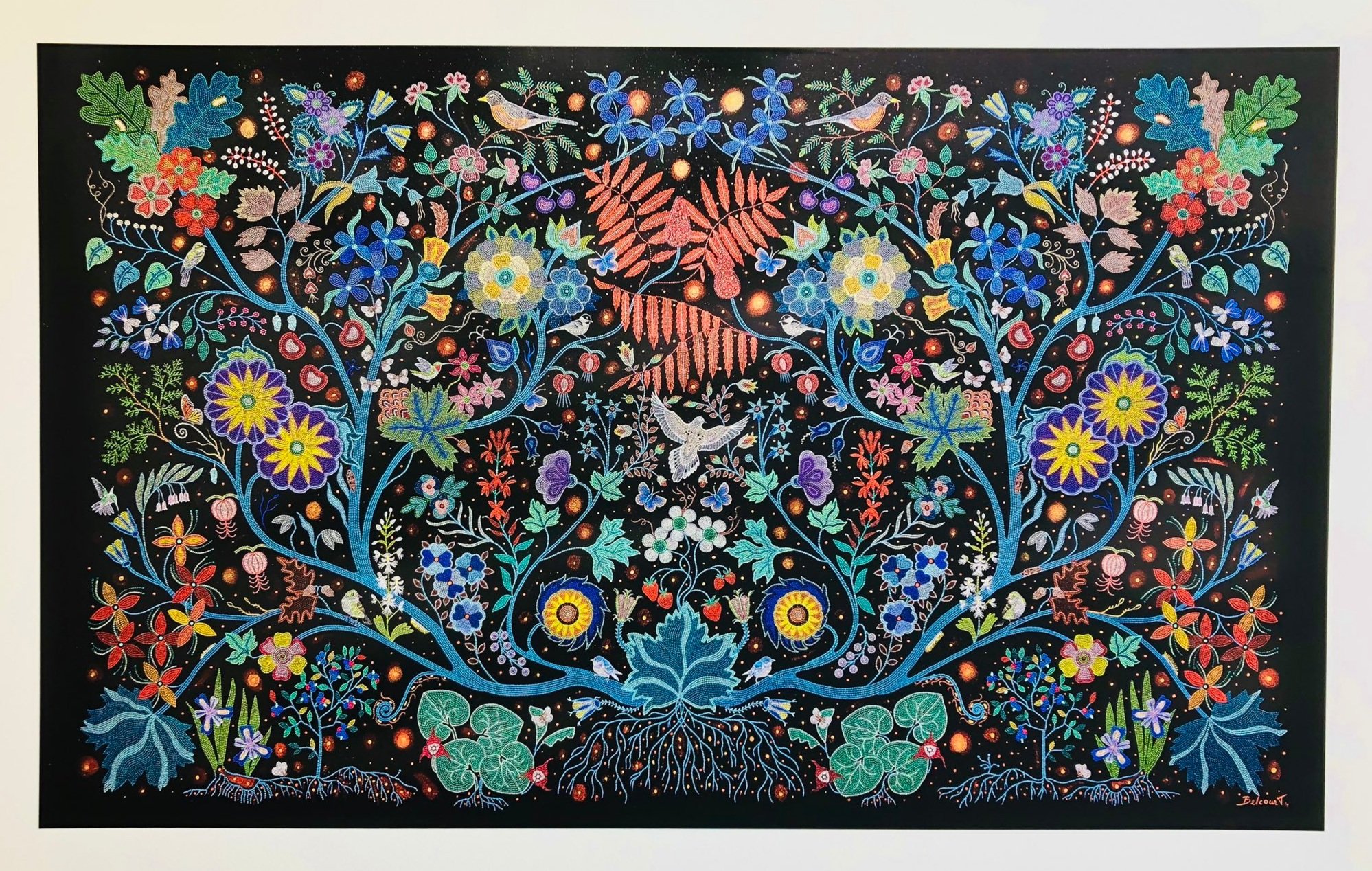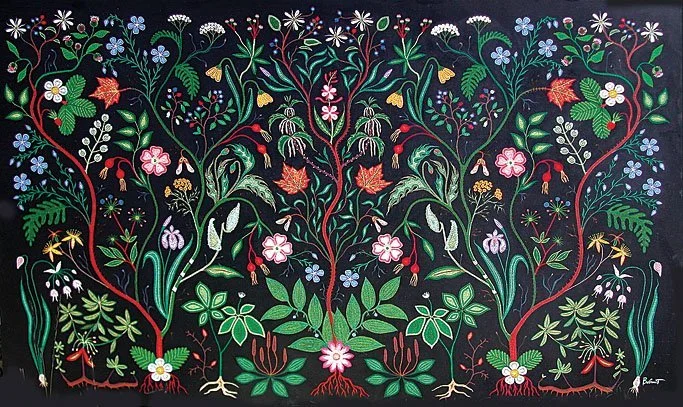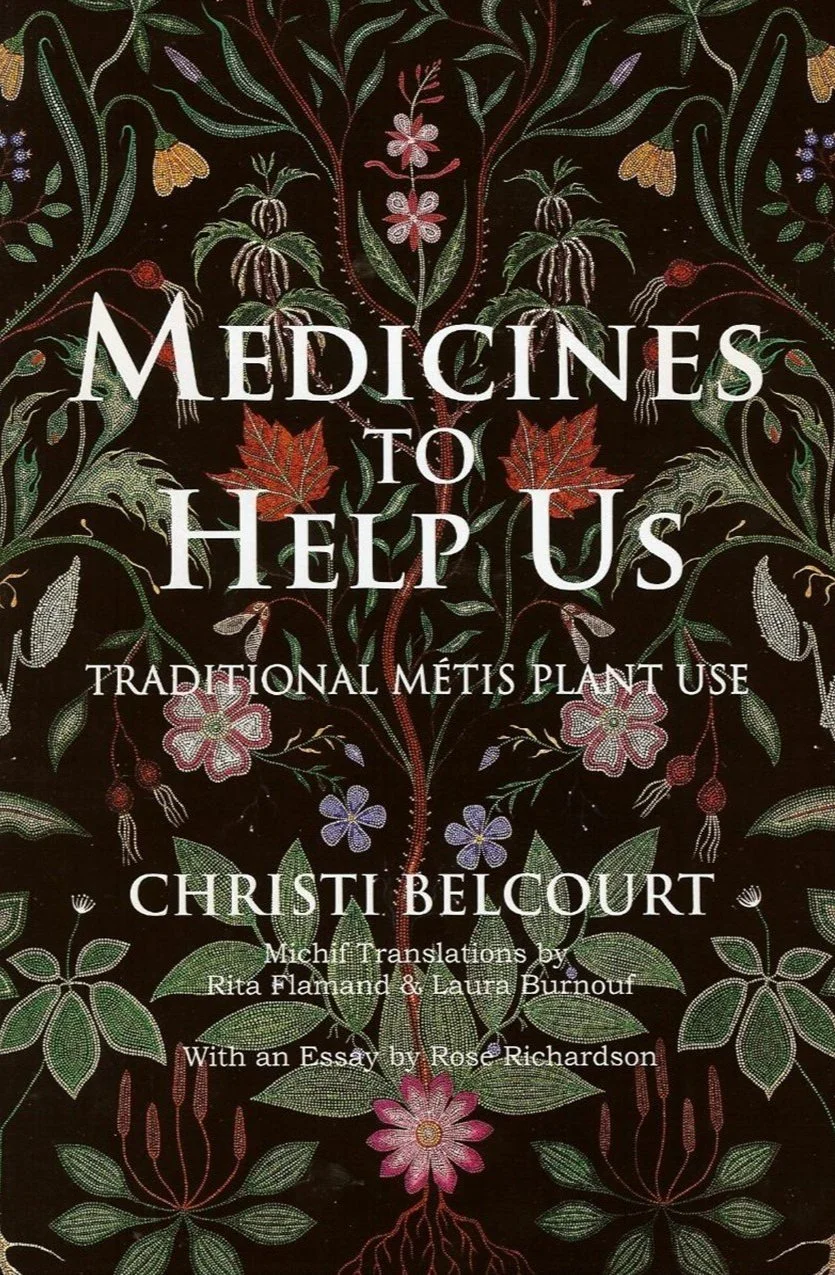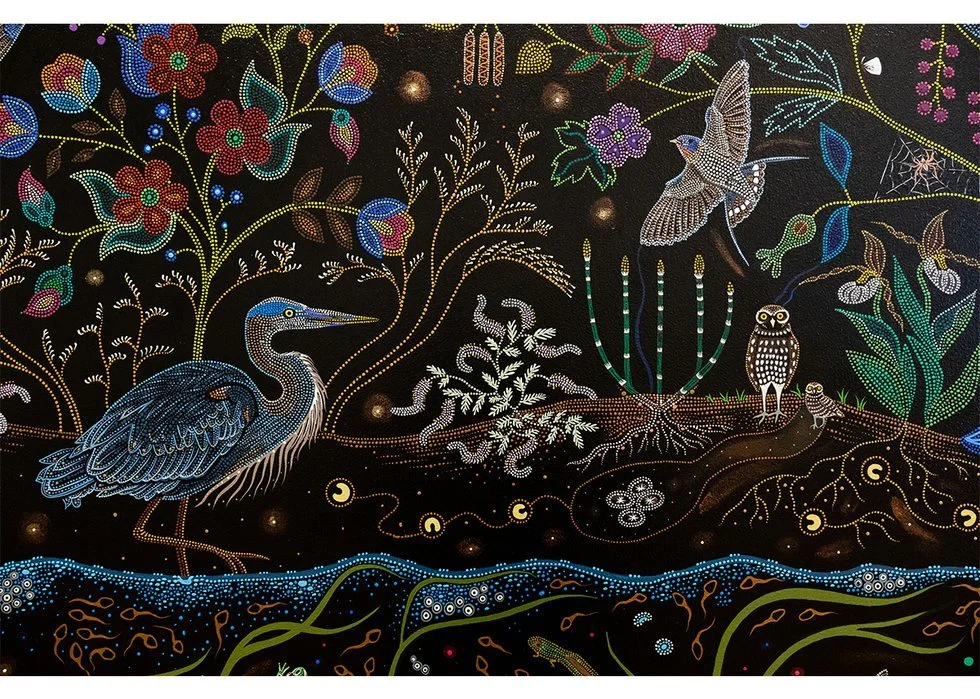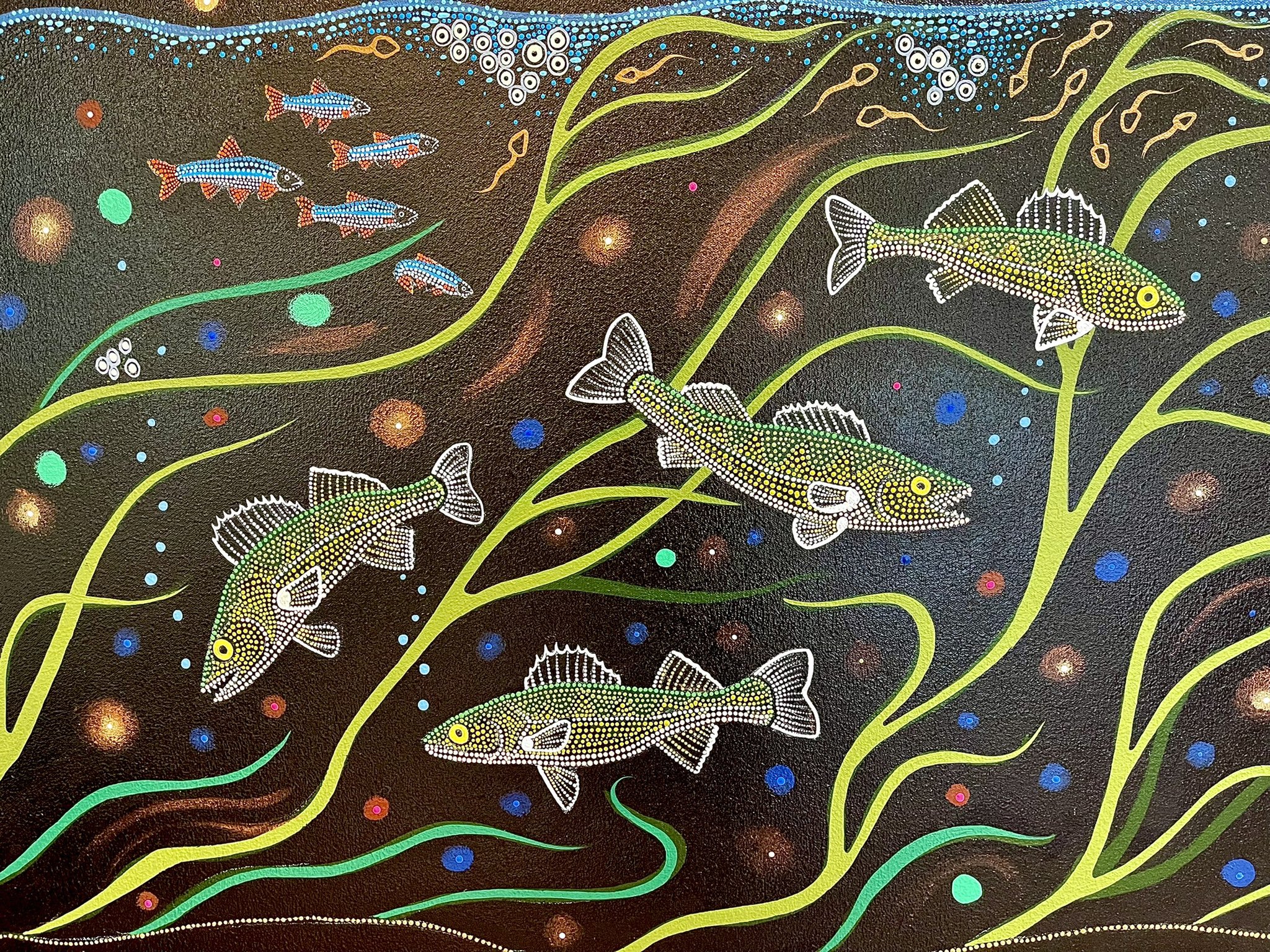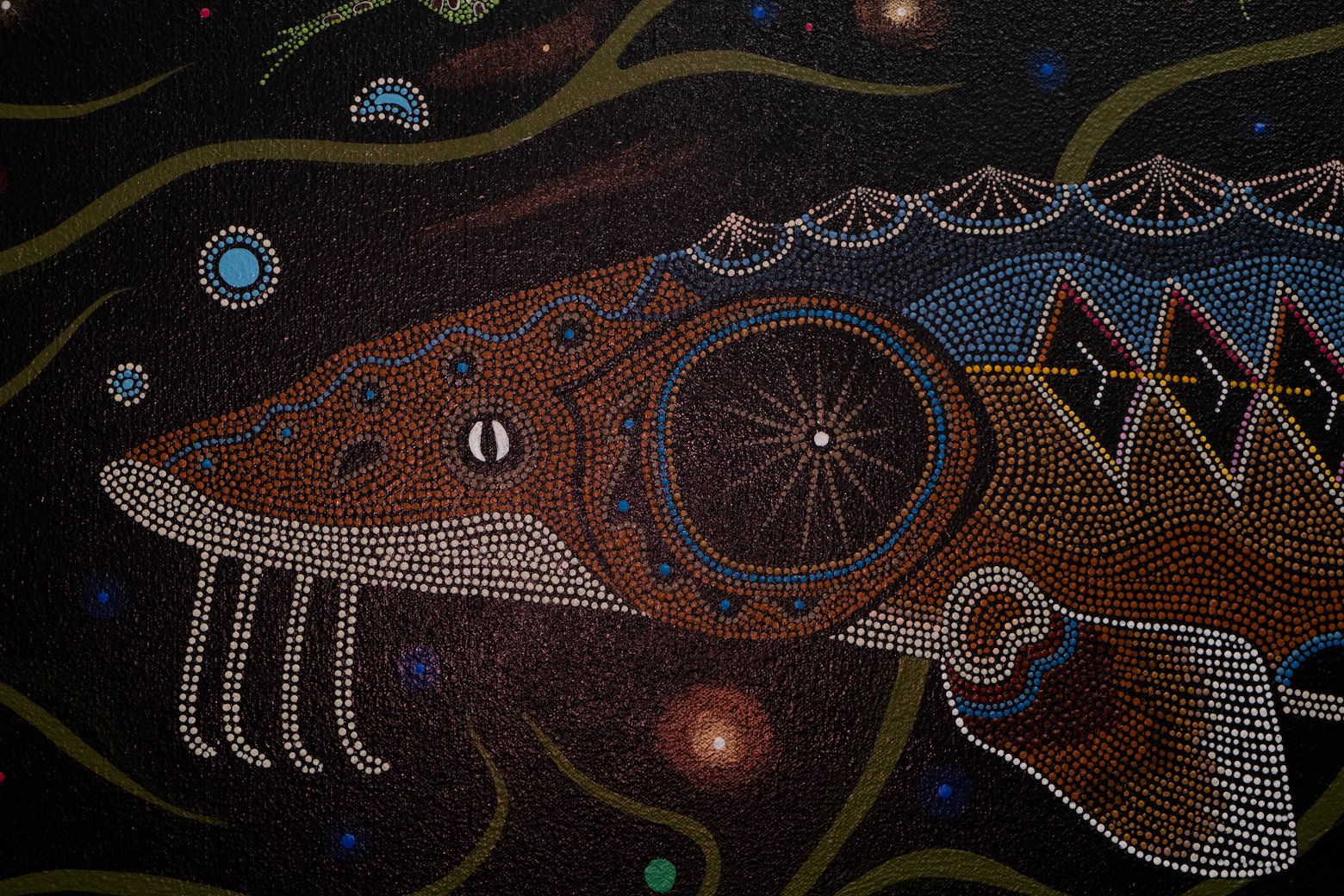Episode 15: Métis artist Christi Belcourt on how to "make things right" in Canada
This episode of The Heart Gallery will take you into the history and ongoing realities of Indigenous affairs in Canada. Recent years have shed light on a painful and violent history, as well as present-day systemic challenges. From the harrowing legacy of the residential school system, which remained active until the 1990s, to the continuous struggles over land rights and cultural preservation, these unfolding revelations have sparked crucial national and international dialogues. They compel us to face uncomfortable truths and prompt a critical re-examination of the process of truth and reconciliation.
Against this backdrop, I’m privileged to interview Christi Belcourt, an artist whose work is deeply entwined with her Métis community's stories. Christi’s art does not merely reflect Métis cultural practices and deep connection to nature; it resonates with the ongoing struggles and triumphs of indigenous people, offering a window into the soul of communities striving for justice.
We explore Christi's work while also talking about how the arts can be a conduit for expressing Indigenous voices and can play a valuable role in efforts to reveal systemic challenges.
I hope you enjoy this conversation.
Homework from Christi: "Do something that is completely selfless - and anonymous - in the aid of someone else."
Mentioned:
- Keetsahnak: our missing and murdered Indigenous sisters, edited by Christi Belcourt
- Medicines to help us: traditional Metis plant us, by Christi Belcourt
- Hearts of Our People: Native Women Artists exhibit
- Bob Marley's War
- Haile Selassie's speech Towards African unity, 1963
- Classically trained inidigenous pianist Jeremy Dutcher
- Gregory Schofield, Canadian Métis poet, beadwork artist, dramatist and non-fiction writer.
- Odawa-Potawatomi artist Daphne Odjig
Connect:
- Christi twitter
- Christi instagram
- The Heart Gallery instagram
- The Heart Gallery website
- Rebeka Ryvola de Kremer instagram
Credits:
Samuel Cunningham for podcast editing, Cosmo Sheldrake for use of his song Pelicans We, podcast art by me, Rebeka Ryvola de Kremer.
Heart moves at magic o’clock:
Three pieces of Christi’s were discussed in the episode. This section offers you Christi’s words along with the accompanying artworks.
1. The Wisdom of the Universe, 2014
Christi: “The Wisdom of the Universe is a painting that is about nine feet long by seven feet high. It is on a black background, so the whole canvas is painted black, and on it is about 200,000 or so dots that are painted to emulate beadwork. It also has many plants that are depicted that are endangered or extinct or extirpated from different areas. I think there's about 27 different species on that canvas that I've shown that are on the endangered species list. People will notice that there are roots depicted in most of my paintings, that there are stems that come out of those roots that have different plants. So through showing roots, I try and show that there's more to life than what we see on the surface. Our ancestry plays a great role in helping to guide us through this life.
There's more to life in the spiritual sense than what we see in the physical realm, that we are all interconnected in everything. We depend, as human species, we depend on everything, and nothing depends on us. That's what I try and show when I'm showing all of these plants coming out of the single stem. That really we are one in the same. That we all are this planet, I imagine it as a living, breathing planet that is one.
I think the religions of the world where they get it wrong is the belief that man was given this earth by the creator and that we have the right to dominate it. In my way of thinking and in the belief system that many of my people share is that we don't dominate it, that the earth actually governs us, that we have to learn how to live in harmony with the earth and with all of the species that are here, that all of the species that are here have rights to their own territories, that they have rights to live just as much as we do.
When we live in balance like that and take only what we need, then we leave something for the future generations. We leave things for the future generations for what they need, like clean water, like clean air. I always think the way that it's presented to us in this capitalist model is that there's this earth and there's scarcity of everything. But to me, I think that there's abundance. There's enough here for everyone. There's enough space here for everyone. There's enough of everything for everyone. If we shift our way of thinking to being responsive to the needs of everyone and everything else, and only taking, like I said, only taking what we need.
2. Medicines to Help Us, 2002
The book Medicines to Help Us came from a painting that I did called Medicines to Help Us. It was a commissioned piece by the Gabriel Dumont Institute in Saskatoon, Saskatchewan. And they asked me to paint a painting and I did and that's what it was titled. And then they said, well, we should turn this into a study guide and a book. They do a lot of work with educational institutes so that they can have different resources on Métis history, Métis culture, Métis art, etc.
We put together this booklet, which is a field guide of sorts, as you said. And what I think is really good about that is we had a Métis language speaker add their comments and add our language in there so that we can have some of the plant names in our language. It's relevant to Métis students. And I think it's been a really good project to work on. And I've been really happy that it's been reprinted a number of times.
It's not a field guide that would be of much use for people who are used to field guides and have all of the other field guides that are available for plants, because it's not that thick. I mean, there's only so many things in there. But the opening essay by Rose Richardson, who is a Métis elder and she works with medicines, like natural medicines, those kinds of things. We often teach and learn while we are out doing things. So if somebody wants to harvest a certain kind of medicine, it's at that time that that's where most of the information will come. So a lot of our people that are doing that kind of work, going out on the land, harvesting medicines, will learn what it's called, how it's used, they'll learn how to process it, how to dry it, how to prepare it, how to clean it, and all of those things.
Art can become a way to teach in a classroom, of course, but the best way to teach is out there, doing. And so this field guide, might be helpful for people who are trying to learn on their own as well. Because a lot of the things that I've done, I've had to do and learn on my own also.
Every Dot a Prayer for the Saskatchewan Rivers
Christi: “Every Dot to Prayer for the Saskatchewan Rivers is divided horizontally between landscape and then waterscape, I suppose, with a big sturgeon painted in the middle and then all these frogs and fish around on the bottom half. And I did have a dream of a sturgeon, and that dream really was different than most of the other dreams I've had in that I was standing in the water with my arm around a sturgeon and the sturgeon spoke to me and said, “I miss the frogs”. And I woke up and that was the strangest dream I think I have ever had. Because first of all, I didn't even know what a sturgeon was. I didn't have any connection to a sturgeon. And it made me curious, why is she telling me that?
And so I started to Google because it was early in the morning and I thought, well, what is the connection between sturgeon and frogs? I came across a Menominee website that said that they had started doing their sturgeon ceremonies again. They had a sturgeon hatchery. They had been helping to restore sturgeon into certain rivers and that led me into more research.
Their belief is the sturgeon will wait for the frogs to sing before they will come home to spawn. And I thought, oh wow, isn't that interesting that the sturgeon's telling me that she misses the frogs? And what does that mean? And I thought, okay, well, let's see where sturgeon live, let's see what's happening. The Lake Sturgeon on the Saskatchewan River are endangered. Some sturgeon have been completely extirpated from the rivers where they swam back to spawn. Some sturgeon will have to be 25 years old before they can lay eggs. And many times a lot of the sturgeon were being caught for their eggs, for their caviar, which was selling for $150 an ounce. And so there's this attack on the sturgeon.
Sturgeon have to lay eggs in clean rivers, not rivers that have been polluted or disturbed by building and destruction. We dam the rivers for hydro and the fish ladders are not big enough to accommodate sturgeon. So the sturgeon that are trying to swim upriver that their ancestors have done for maybe since the beginning of time, they can no longer make it up that river.
We're seeing a huge decline in sturgeon. We don't realize that they have to be very, very big before that they can spawn. They're not just little fish. And what we're seeing is people are even catching smaller sturgeon that are not yet even able to reproduce. This is a really critical thing. And I think the frogs also by human activity. When you look at all of the endangered species on the endangered species lists that exist in every state and province and federally, you'll find that when you go read, why are they in decline? I have not yet found any that have said they're in decline for natural causes. They're in decline and threatened because of human activity.”
Transcript:
~ coming soon ~

